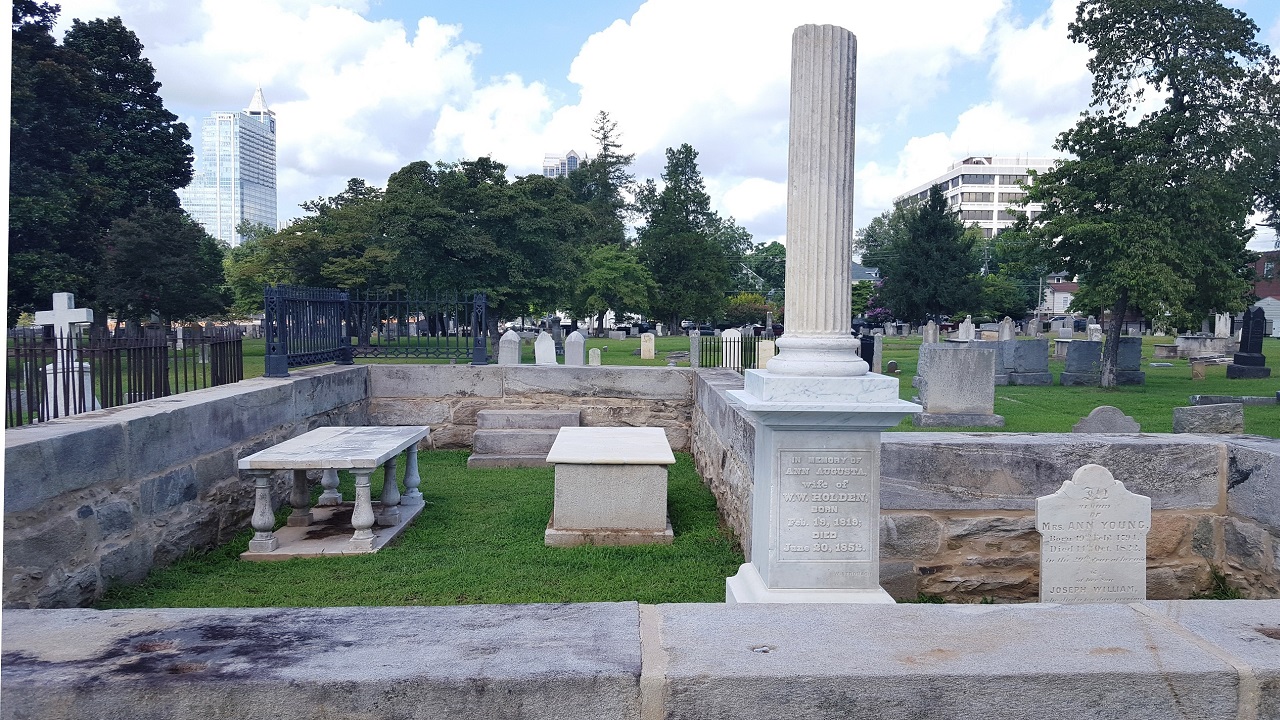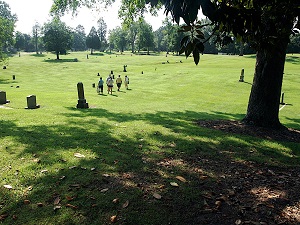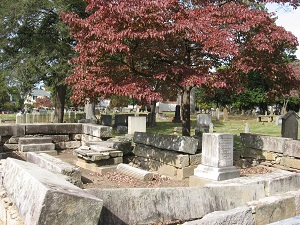Special to the Philanthropy Journal
In a state capital that is being revitalized, it can be easy to overlook historical sites. These locations, like historic cemeteries are the “jewels of the city,” but how can citizens shed light on the importance of these settings?
 Broken monuments, fallen fences, and graffiti are not characteristics that citizens should expect to see at historical sites. When historic preservation advocates brought awareness to the Raleigh, North Carolina city manager about the conditions of the historic City Cemetery, change needed to be made. Raleigh City Cemeteries Preservation (RCCP) was founded in 2006, with the intention to shed light on the historical significance of Raleigh cemeteries.
Broken monuments, fallen fences, and graffiti are not characteristics that citizens should expect to see at historical sites. When historic preservation advocates brought awareness to the Raleigh, North Carolina city manager about the conditions of the historic City Cemetery, change needed to be made. Raleigh City Cemeteries Preservation (RCCP) was founded in 2006, with the intention to shed light on the historical significance of Raleigh cemeteries.
In response to the complaints to the Raleigh city manager, city staff hired a consultant to craft a strategic plan for advocacy and care of the historic sites. Meanwhile, Jane Thurman, Terry Harper, and Alpha Howze were transitioning off the board of the Raleigh Historic Districts Commission, with an idea to create a separate board to support the cemeteries. “In the early days of our group- every accomplishment, including having paperwork accepted to become a 501(c)3, was a major milestone,” remembers Thurman, RCCP president.
RCCP held their first fundraiser, a cocktail party outdoors at Haywood Hall in Raleigh, with the support of their board members, the late Margie Haywood, and her daughter, Betsy Haywood. The group was surprised at the turnout and the interest in helping to restore and care for the cemeteries. Because of the turnout, RCCP knew that the support was there and proceeded to partner with those who had a passion for preserving their city cemeteries.
The mission of the RCCP group is “to help the City of Raleigh promote and provide preservation and restoration of city-owned cemeteries and assist with programs to enhance education and heritage tourism.”
The excellent working relationship that has developed between RCCP and the city of Raleigh staff is the basis of this successful private-public partnership. In 2009, the Raleigh City Council established the city of Raleigh Historic Cemeteries Advisory Board (HCAB). City staff provide guidance for board members, including RCCP officers, and others serving from the community, to accomplish work plan goals based on a strategic plan for the historic cemeteries. Goals of the HCAB, like the strategic plan, are set with partnership in mind.
The success of RCCP is due to the board developing solid relationships with the community, city of Raleigh staff, sheer perseverance, as well as the congeniality of the board. RCCP today is comprised of many of the original members from 2006. More recent members form the group that has diverse expertise in history, research, landscape architecture, legal issues, graphics and website design, as well as a shared love of history and historic cemeteries.
RCCP has worked with schools and colleges eager to learn history, or study the landscape design and anthropology of the cemeteries; civic and preservation group seeking to fund good public projects, as well as descendants who have ancestors buried in the cemeteries with the end result to restore historic monuments.
“When we first started, I used to say, ‘Let’s make the circle bigger,” explains Thurman. “I would say all of us on RCCP love this city, and want to share its history and ensure the cemeteries are well-kept according to preservation standards.”
RCCP has helped the city by conducting tours and raising awareness, as well as funding restoration of historic monuments at three public historic cemeteries in Raleigh, the 7.5-acre City Cemetery; the large 34-acre African-American Mt. Hope Cemetery; and the small one-acre O’Rorke-Catholic Cemetery.
One of RCCP’s greatest achievements and largest projects was raising $90,000 to restore the historic family plot of William Peace, benefactor of William Peace University, and his brother Joseph and family. This included the painstaking restoration of four historic monuments as well as a massive stone wall that lay on the ground in pieces, some stones weighed more than a ton at 3600 pounds, which had to be repositioned with a special manually set tripod crane in the midst of other fragile monuments. The final work, a cast iron fence that tops the stone wall, was recreated in sections at the OK Foundry in Richmond from special molds, and will be installed this spring.
“We have had an incredible response from the community to meet our fundraising goals,” says Thurman. “Civic organizations, foundations, William Peace University, the city of Raleigh, the 1789 Questers, the Raleigh Rotary Club, and numerous individuals have helped us. The Peace plot is the centerpiece of the cemetery and since our restoration expert Dean Ruedrich and his team have worked on it, the whole cemetery looks much improved.” Because of RCCP’s partnerships and staff, citizens are well-educated on the significance of these historical sites and are able to get involved and take part in preserving these Raleigh cemeteries. Even the RCCP web site offers an abundance of information, including searchable GIS maps, and downloadable walking tour maps, lists of the interred, National Register nomination documentation, and other historic information.
“Sometimes people don’t realize that cemeteries are actually tourist destinations and are part of a city or town’s heritage tourism,” adds Thurman. “We meet people from all over the United States visiting Raleigh cemeteries, who aren’t necessarily looking for a grave of a family member. They are walking through the cemetery to learn about those who helped build the city, which includes grave markers for slaves as well as founding fathers.”
Over the last few years, downtown Raleigh has experienced a construction boom, shaping the city for generations to come. RCCP understands the importance of keeping historic elements intact— once removed or lost, they are gone forever. “The city is undergoing a renaissance right now, in terms of new residential buildings, restaurants, and other attractions,” says Harper. “But we want people to remember that the historic cemeteries of Raleigh are the jewels of the city. Their history and the stories of those interred in them are part of the fabric of the city.” Because of RCCP’s partnerships with staff and the community, the historical settings of the city cemeteries will be preserved and admired for years to come.
Raleigh City Cemeteries Preservation is a partner with the City of Raleigh and others to promote and provide preservation and restoration of the three city owned historic public cemeteries.






